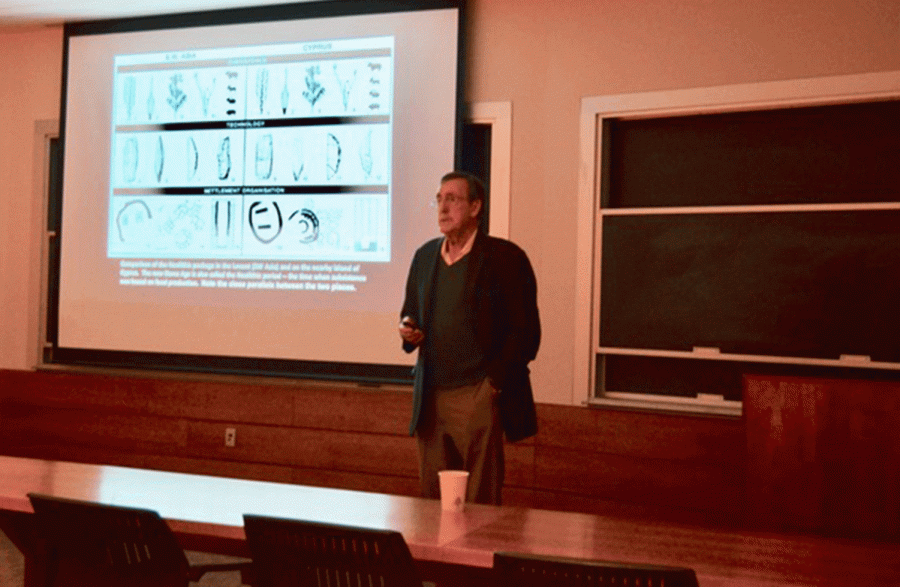Albert Ammerman: “Archaeology’s Renaissance Man”
Professor Albert Ammerman’s travels to the Western Mediterranean played a crucial role in his discovery of different obsidian pieces. These findings contributed to evidence of Neolithic expansion and relocation.
Department of the Classics Research Professor Albert Ammerman, dubbed “archaeology’s renaissance man” by Science, gave the lecture “Age Voyaging and the Spread of Early Farming in the West Mediterranean” in the Ho Science Center on Friday, February 16 to an audience of both students and professors.
Ammerman began his higher education with a full athletic scholarship for high jump at the University of Michigan. Ammerman lauded the importance of undergraduate education, citing his undergraduate experience as vital to his growth and career. During the lecture, Ammerman discussed his decades of research on the “Neolithic Transition,” a term he coined to describe the transition to farming in the Western Mediterranean, which marked a deviation from the tradition of hunting and gathering. Ammerman’s terminology was rapidly adopted by researchers in the field, as his first publication in 1971 placed him on the forefront of a field he helped pioneer, archeo-genetics.
Ammerman introduced the audience to the Neolithic Period, also known as the New Stone Age, as a period of human history roughly 10,000 years ago. He explained the original theory that hunters and gatherers in the Mediterranean were reluctant seagoers, but then outlined his challenge to this conventional wisdom through archaeological research and ice core analysis.
Ammerman depicted his travel to the Western Mediterranean as crucial to the development of his theory that pre-Neolithic hunters and gatherers adopted coastal voyaging willingly and purposefully.
His discovery of obsidian pieces was evidence of Neolithic expansion and relocation, with long-range voyaging explaining rapid, generational leaps to different areas of the Mediterranean. In explaining the shockingly rapid coastal sea travel by a land-faring population, Ammerman analyzed Greenland ice cores to discover climatic evidence for why the population moved 2500 km in only three centuries.
He found that a period of extreme cold sparked a crisis and forced the hunters and gatherers to take to the sea and make a substantial migratory push. Ammerman integrated his research experience into his lecture.
“[The lecture was] easy to follow because of the images and diagrams [utilized],” sophomore Selena Vanapruks said.
Ammerman showed a video of himself scuba diving off the coast of Cyprus in an effort to locate stone tools from early-Neolithic sites that used to be on dry land, when sea level was 60-70 meters lower. Ammerman also showed images of his Aspros research site, which is located on the west coast of Cyprus, where he discovered 8,000 to 10,000 stone tool fragments.
Using genetic data to track the migration of people combined with archaelogial work, Ammerman documented the pace of the spread of early farming in the Western Mediterranean. His conclusions about the variance in the speed of farming expansion, as well as the anomaly of sea voyaging, have served as notable additions to the study of early agriculture and Neolithic migration. Although the presentation was geared towards anthropologists and archaeologists due to its advanced data and technical language, it still found resonance in other areas of study.
Contact Chris Burke at [email protected].







